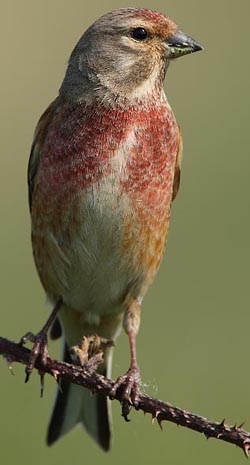County Kerry

Birding County Kerry
County Kerry is a southwestern county of Ireland. Informally referred to as The Kingdom, it forms part of the Irish province of Munster. With an area of 4,746 km² (1,832 square miles), it is bordered by County Limerick to the east and County Cork to the south-east. The county town is Tralee. One of Ireland’s most famous towns, Killarney, is located in Kerry. The Lakes of Killarney, an area of outstanding natural beauty, are located in Killarney National Park. The tip of the Dingle Peninsula is the most westerly point of both mainland Ireland and Europe. Likewise, Fenit, the port of Tralee, is the most westerly commercial shipping port in Europe.
Kerry faces the Atlantic Ocean and, typically for an Atlantic coastal region, features many peninsulas and inlets: principally the Dingle Peninsula, the Iveragh Peninsula, and the Beara Peninsula, shared with neighbouring County Cork. The county is bounded on the west by the Atlantic Ocean and on the north by the River Shannon. The Ring of Kerry on the Iveragh Peninsula is a popular route for tourists and cyclists. The pedestrian version is the scenic Kerry Way which follows ancient paths generally higher than that adopted by the Ring of Kerry.
Kerry contains two of the three highest mountains in Ireland, Carrauntoohil, part of the Macgillycuddy’s Reeks range and Mount Brandon, part of the Slieve Mish range.
The Lakes of Killarney in the centre of the county are a scenic tourist attraction.
Just off Kerry’s coast are a number of islands, including the Blasket Islands, Valentia Island and the Skelligs. Skellig Michael is a World Heritage Site, famous for the medieval monastery clinging to the island’s cliffs. Kerry contains the extreme west point of Ireland Dunmore Head on the Dingle Peninsula, or including islands, Tearaght Island, part of the Blaskets. The most westerly inhabited area of Ireland is Dunquin, on the Dingle Peninsula. The River Feale, the River Laune and the Roughty River flow through Kerry, into the Atlantic.
The North Atlantic Current, part of the Gulf Stream, flows north by Kerry and the west coast of Ireland, resulting in milder temperatures than would otherwise be expected at the 52 North latitude. This means that subtropical plants such as the strawberry tree and tree ferns, not normally found in Northern Europe, thrive in the area. There are a number of gardens in the county, open to visitors.
Because of the mountainous area and the prevailing south-westerly winds, Kerry is among the regions with the highest rainfall in Ireland. Due to its location, the area is the site of a weather reporting station on Valentia for many centuries. The Irish record for one-day rain-fall is 243.5 mm (9.59 in), recorded at Cloore Lake, in Kerry in 1993.
-
Wikipedia
GNU Free Documentation License
http://en.wikipedia.org/wiki/County_Kerry
-
Michael O'Clery & Jill Crosher
-
NP Killarney
WebsiteSatellite ViewIn all, 141 species of birds have been recorded in Killarney National Park to date. Some of these are resident, some are migrants, spending only part of the year here, whilst others occur as vagrants, appearing sporadically for such reasons as stormy weather conditions or unusually cold spells on the continent… -
NR Little Skellig
WebpageSatellite ViewThe Little Skellig reserve is an iconic BirdWatch Ireland nature reserve. Isolated jagged pinnacles of rock rising up to 134 metres make for an impressive sight alongside its larger partner, Skellig Michael. Little Skellig is famed for its massive colony of some 35,000 pairs of Gannets, the largest breeding colony in Ireland and among the largest in the world, that make for an awe-inspiring sight from a boat. -
NR Puffin Island
WebpageSatellite ViewThe Puffin Island Reserve is a narrow steep-sided island rising to 145 m with spectacular cliffs which, as its name suggests, is home to breeding Puffins during the summer months. Thousands of birds can be seen as they swirl around above their breeding burrows. Under the cover of darkness the island comes alive with thousands of Manx Shearwaters returning to their nests. On the steep cliffs, Guillemots, Razorbills and Kittiwakes also breed.
-
Michael O'Clery - Kerry Birding
BLOG"In natural science the principles of truth ought to be confirmed by observations." (Linnaeus). "Though, preferably backed up by a series of high quality digital photos and video." (KerryBirding).
